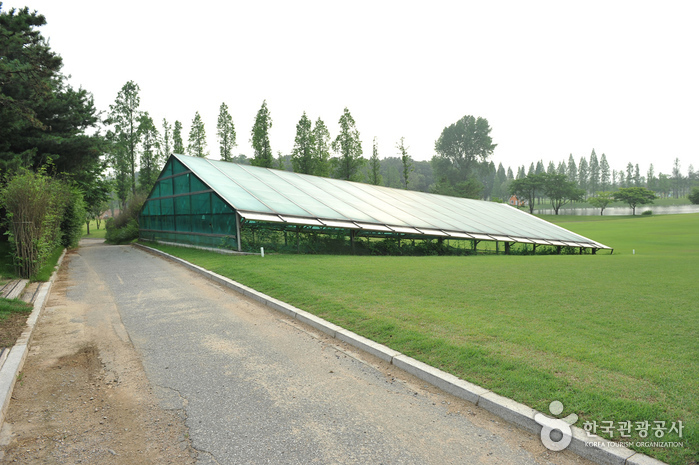Olive Young - Ansan Gojan Branch [Tax Refund Shop] (올리브영 안산고잔점)
18.6Km 2024-06-27
168, Gwangdeok-daero, Danwon-gu, Ansan-si, Gyeonggi-do
-
W-Star Pharmacy [Tax Refund Shop] (W-store스타약국)
18.6Km 2024-04-22
574, Cheonan-daero, Dongnam-gu, Cheonan-si, Chungcheongnam-do
-
Airman Inc. ((주)에어맨)
18.6Km 2025-10-23
(#1032, 2nd Floor, Terminal 1), 272 Gonghang-ro, Jung-gu, Incheon
Established in 2000, Airman Inc. has been providing comprehensive airport-related services to cargo airlines operating in Korea, including flight permits, ground handling, and immigration procedures for passengers and crew.
In 2011, the company expanded into medical tourism (foreign patient attraction) and registered as a full-service travel agency in 2013, focusing on attracting foreign patients and inbound travel, particularly from Mongolia, Vietnam, and the United States.
We offer a range of products that combine medical services with diverse tourism content, including concierge services, airport protocol, medical tourism, tours for accompanying family members, transit tourism, and DMZ tours for flight crews, with a focus on Mongolia, the Middle East, Vietnam, and the United States.
LG Best Shop - Gojan Branch [Tax Refund Shop] (엘지베스트샵 고잔점)
18.6Km 2024-04-23
171, Gwangdeok 1-ro, Danwon-gu, Ansan-si, Gyeonggi-do
-
Olive Young - Ansan Branch [Tax Refund Shop] (올리브영 안산)
18.6Km 2024-04-19
41, Gojan 2-gil, Danwon-gu, Ansan-si, Gyeonggi-do
-
Incheon Gyeongseo-dong Nokcheongja Kiln Site (인천 경서동 녹청자 요지)
18.7Km 2021-04-23
54, Doyoji-ro, Seo-gu, Incheon
+82-32-440-4063
The Nokcheongja (Green Celadon) Kiln Site was designated as Historic Site No. 211 in May 1970. On December 9, 1984, the 82.6 ㎥ of the protective film was restored here. In addition, the unearthed models consisted of bowls and plates, as well as porcelain and pots. The colors of the glaze are greenish brown and dark green, opaque and non-glossy, and there are spots on the surface, but this is the component of the glaze. It is believed to have come from the influence of the special structure of the kiln and the firing temperature.
Nokcheongja Museum (녹청자박물관)
18.7Km 2021-10-23
54, Doyoji-ro, Seo-gu, Incheon
+82-32-563-4341
Since opening in 2002, the Nokcheongja Museum has been preserving and exhibiting academic materials about the Green Celadon Kiln Site, a Historic Site designated in 1970. It is the only museum dedicated to celadons in Incheon. The museum is divided into the History Exhibition Hall where visitors can observe the celadon making process and the Special Exhibition Hall that displays modern-day celadons. In addition to the two indoor exhibition halls, the museum also has an outdoor exhibition site with a collection of approximately 200 donated potteries, ranging from traditional to recently trending designs.
Olive Young - Ansan Jungang Rodeo Branch [Tax Refund Shop] (올리브영 안산중앙로데오점)
18.7Km 2024-06-26
1F, 33, Gojan 1-gil, Danwon-gu, Ansan-si, Gyeonggi-do
-
New Balance - Ansan Jungang Branch [Tax Refund Shop] (뉴발란스 안산중앙)
18.8Km 2024-04-19
907, Jungang-daero, Danwon-gu, Ansan-si, Gyeonggi-do
-
Artbox - Ansan Branch [Tax Refund Shop] (아트박스 안산)
18.9Km 2024-04-19
915, Jungang-daero, Danwon-gu, Ansan-si, Gyeonggi-do
-

![LG Best Shop - Gojan Branch [Tax Refund Shop] (엘지베스트샵 고잔점)](http://tong.visitkorea.or.kr/cms/resource/78/2890278_image2_1.jpg)

![New Balance - Ansan Jungang Branch [Tax Refund Shop] (뉴발란스 안산중앙)](http://tong.visitkorea.or.kr/cms/resource/22/2888522_image2_1.jpg)
![Artbox - Ansan Branch [Tax Refund Shop] (아트박스 안산)](http://tong.visitkorea.or.kr/cms/resource/40/2888540_image2_1.jpg)
 English
English
 한국어
한국어 日本語
日本語 中文(简体)
中文(简体) Deutsch
Deutsch Français
Français Español
Español Русский
Русский